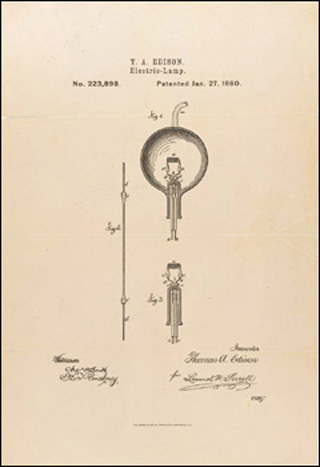
Create or Perish - The Case for Inventions and Patents
This book explores the history of private and public rights in scientific discoveries and applied engineering, leading to the development of worldwide patent systems.
Tag(s): Software Libre and Open Source
Publication date: 31 Dec 1964
ISBN-10: n/a
ISBN-13: n/a
Paperback: n/a
Views: 17,092
Type: N/A
Publisher: n/a
License: n/a
Post time: 13 Apr 2011 12:35:25
Create or Perish - The Case for Inventions and Patents
 This book explores the history of private and public rights in scientific discoveries and applied engineering, leading to the development of worldwide patent systems.
This book explores the history of private and public rights in scientific discoveries and applied engineering, leading to the development of worldwide patent systems.
Tag(s):
Software Libre and Open Source
Publication date: 31 Dec 1964
ISBN-10: n/a
ISBN-13: n/a
Paperback: n/a
Views: 17,092
Document Type: N/A
Publisher: n/a
License: n/a
Post time: 13 Apr 2011 12:35:25
Publication date: 31 Dec 1964
ISBN-10: n/a
ISBN-13: n/a
Paperback: n/a
Views: 17,092
Document Type: N/A
Publisher: n/a
License: n/a
Post time: 13 Apr 2011 12:35:25
Excerpts from the Introduction:
Robert H. Rines wrote:The American patent system needs no apologists. Though it may not be entirely suited in all respects to our current problems and needs, and though sometimes it may have been misused, its record of achievement in the progress of our country is indelibly written on the pages of history. Its current service, despite the fact that it is not being fully utilized in the second half of the century, seems to me equally indisputable; though some critics without firsthand experience in this field may not agree. Those critics are free to write their own books.
I have undertaken to write mine as a champion of the philosophy that today, as much as ever, incentives that make a person fight to be an individual promote the welfare the whole state. In my lectures, many of which have been included in this book, I frankly paint a picture, particularly for engineers and applied scientists, that is based on this philosophy and thus supports patents.
But invention, patents, and innovation cannot be treated apart from their social, political, and economic environment, despite mechanistic courses given in law schools. Thus, to review the principles of patent law without delving into the interplay of many aspects of our society would be to discuss a theoretical, nonexistent system. This book, therefore, is not addressed solely to engineers and applied scientists; some parts are addressed to lawyers, economists, businessmen, and politicians.
I have found the problem of presenting all facets so that they may be understood by readers of quite varied disciplines to be not without difficulty. For this reason illustrations have been confined to technology that can readily be comprehended by nontechnicians, and legal and economic discussions have been kept sufficiently elementary to be grasped at least in part by the technical reader, but without sacrificing the point intended for the legalist or economist.
Those who expect an engineering “cookbook” approach to this subject will not find it here. Similarly, those who look for a presentation in the form of a Procrustean “case study” will be equally disappointed.
To write an interdisciplinary book requires a mixture of interdisciplinary techniques, and so I have tried to interweave history, primary principles, procedures, problems, and points of conflict into what I believe to be the true fabric pattern of the patent system, struggling to stay alive in a world of rapid change. Because of this somewhat unorthodox approach, I have summarized the scope of each chapter at its head, and, in some cases, the reason for the approach used in order that the reader may better understand my mode or presentation.
Tweet
About The Author(s)
No information is available for this author.
Book Categories
Computer Science
Introduction to Computer Science
Introduction to Computer Programming
Algorithms and Data Structures
Artificial Intelligence
Computer Vision
Machine Learning
Neural Networks
Game Development and Multimedia
Data Communication and Networks
Coding Theory
Computer Security
Information Security
Cryptography
Information Theory
Computer Organization and Architecture
Operating Systems
Image Processing
Parallel Computing
Concurrent Programming
Relational Database
Document-oriented Database
Data Mining
Big Data
Data Science
Digital Libraries
Compiler Design and Construction
Functional Programming
Logic Programming
Object Oriented Programming
Formal Methods
Software Engineering
Agile Software Development
Information Systems
Geographic Information System (GIS)
Mathematics
Mathematics
Algebra
Abstract Algebra
Linear Algebra
Number Theory
Numerical Methods
Precalculus
Calculus
Differential Equations
Category Theory
Proofs
Discrete Mathematics
Theory of Computation
Graph Theory
Real Analysis
Complex Analysis
Probability
Statistics
Game Theory
Queueing Theory
Operations Research
Computer Aided Mathematics
Supporting Fields
Web Design and Development
Mobile App Design and Development
System Administration
Cloud Computing
Electric Circuits
Embedded System
Signal Processing
Integration and Automation
Network Science
Project Management
Operating System
Programming/Scripting
Ada
Assembly
C / C++
Common Lisp
Forth
Java
JavaScript
Lua
Rexx
Microsoft .NET
Perl
PHP
R
Python
Rebol
Ruby
Scheme
Tcl/Tk
Miscellaneous
Sponsors